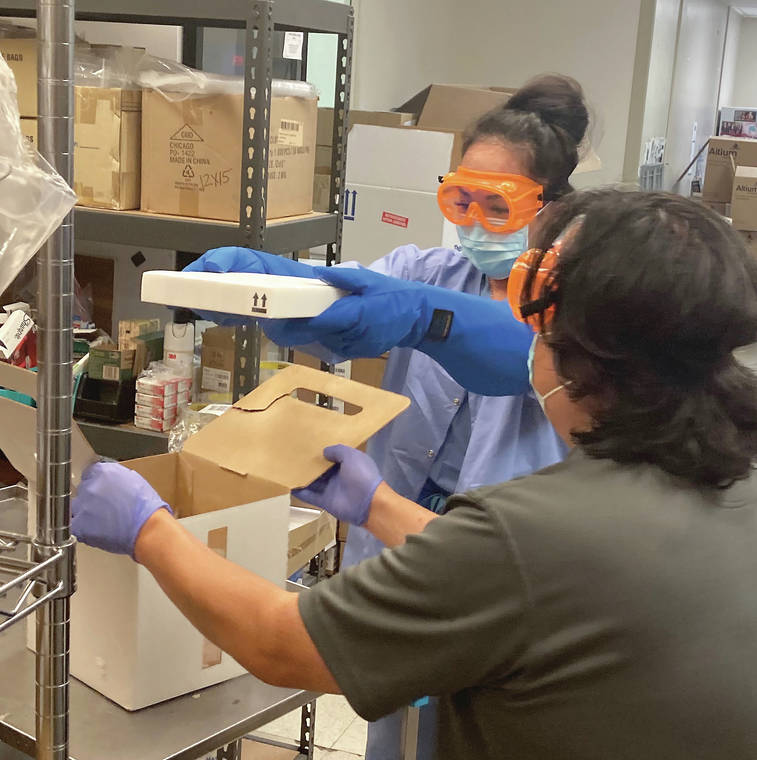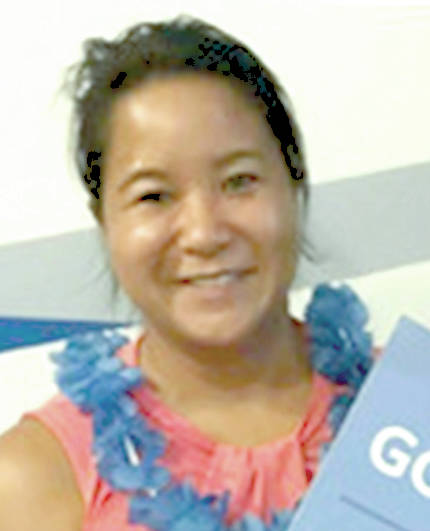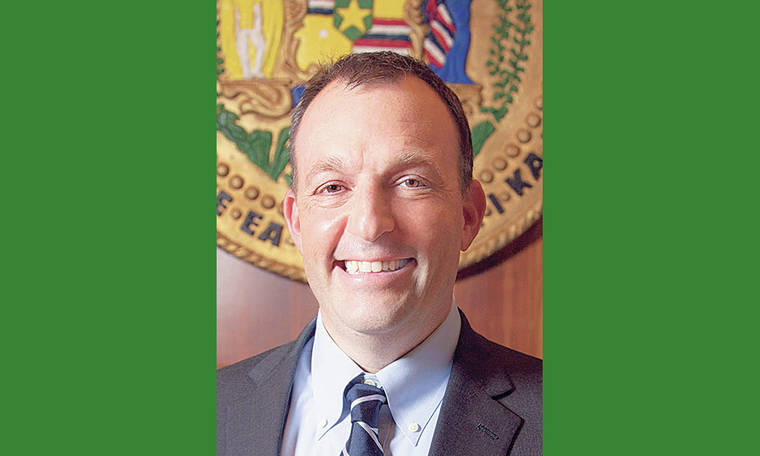As the highly anticipated COVID-19 vaccine is rolled out in other parts of the state, Big Island hospitals are still waiting to receive their first doses.
Hilo Medical Center is expected to receive one tray of 975 doses Monday and it will take a day or two to prepare for the vaccine’s administration.
“It seems as though the timeline got pushed back slightly than originally indicated,” said HMC spokeswoman Elena Cabatu on Wednesday. “… We are preparing our vaccine clinic to administer our vaccines to our employees who are willing to take it.”
Cabatu said there should be enough doses in the first round for those who want to receive it, with the hope that more employees will be willing to get the vaccine on the second shipment.
As reported previously, an internal survey conducted by HMC found that of the 643 employees who responded, 44% said they would take the vaccine, with 28% undecided.
“We have about 1,500 employees in the East Hawaii Region (of the Hawaii Health Systems Corp.) and we must lead by example to help build the community’s confidence in the vaccine,” Cabatu said.
Lynn Scully, spokeswoman for Queen’s North Hawaii Community Hospital in Waimea, said the hospital also thinks it will receive its vaccine shipment Monday but is not yet sure of the quantity.
Staff response about the vaccine, however, is good.
In a survey this week, nearly 60% of employees said they would get the vaccine as soon as it’s made available, Scully said.
Kona Community Hospital also expects to receive its vaccine Monday afternoon and will begin administering it Wednesday.
Earlier this month, the U.S. Food and Drug Administration approved emergency use of a COVID-19 vaccine developed by Pfizer and BioNTech.
“A day after the rollout of Pfizer-BioNTech’s coronavirus shots, the Food and Drug Administration said its preliminary analysis confirmed the effectiveness and safety of the vaccine developed by Moderna and the National Institutes of Health,” the Associated Press reported Wednesday. “A panel of outside experts is expected to recommend the formula (today), with the FDA’s green light coming soon thereafter.”
According to the AP report, the Moderna vaccine uses the same technology as Pfizer-BioNTech’s and showed similarly strong protection against COVID-19 but is easier to handle because it does not need to be kept in the ultra-cold freezers at minus-94 degrees.
Hawaii is expecting to receive more than 81,000 doses of COVID-19 vaccines by Pfizer and Moderna by the end of December.
“It is exciting, it does bring hope and it’s going well,” said Lt. Gov. Josh Green, a Big Island physician, about the state’s vaccine roll out.
The first shipment of vaccines arrived this week at The Queen’s Medical Center in Honolulu.
“It is a great big, heavy lift to vaccinate people because you can only do so many per hour,” Green said. “No matter how many volunteers you have, you have to go steadily and carefully through, but they’re going now.”
According to the state Department of Health, Hawaii on Wednesday received another 3,900 doses of the Pfizer vaccine, which was distributed to Kapi‘olani Medical Center for Women and Children, Straub Medical Center, Pali Momi Medical Center, Kaiser Permanente, Queen’s Medical Center West Oahu and Waianae Coast Comprehensive Health Center.
“Next week, we expect to get a lot of vaccine,” said Green, who spoke about the state’s vaccine rollout Wednesday during a livestream with the Honolulu Star-Advertiser. “It looks like in the next 7-14 days, we’ll get about 23 additional trays, so you see how the thousands and thousands of vaccines open up.”
Green confirmed that vaccines will arrive at hospitals on neighbor islands next week.
“All of the places all across the state start getting their vaccine trays,” he said. “Some people asked the question, why did the first five trays all go to Oahu? It was purely based on the pre-order and the refrigeration capacity. That was it. It was not specific to anything else. We had to make sure that people had already well-established in advanced, assured very low temperature freezers. Otherwise the vaccine becomes, as you know, useless.”
The first vaccines will go to high risk front-line health care providers and employees and residents of long-term care facilities.
Green said the Moderna vaccine will mostly be used for long-term care facilities in the initial vaccination phases, and Pfizer is going directly to the hospitals.
“My recommendation to facilities or people out there right now is I wouldn’t worry about one versus the other,” he said. “They have essentially the same side effect profile, which is pretty minimal … If you get a choice, take what’s available that day in my opinion.”
The only substantive difference between the two vaccines in the amount of time necessary between the two required doses — three weeks for the Pfizer vaccine and four weeks for the Moderna, he said.
Green said the effectiveness of the vaccines is expected to last no less than a year, while some think the vaccine could last as long as two years.
“They will be doing studies constantly on those of us who have all been vaccinated, or chosen (to get vaccinated) … ,” he said.
Green said flu vaccines change each year because of mutations in the virus, but vaccines for pneumonia can last 10 years.
“So it’s going to be somewhere in between there,” he said. “We’ll know the data by fall because millions of people are getting vaccinated and subsequently studied … ,” he said.
West Hawaii Today Editor Chelsea Jensen contributed to this story.
Email Stephanie Salmons at ssalmons@hawaiitribune-herald.com.











